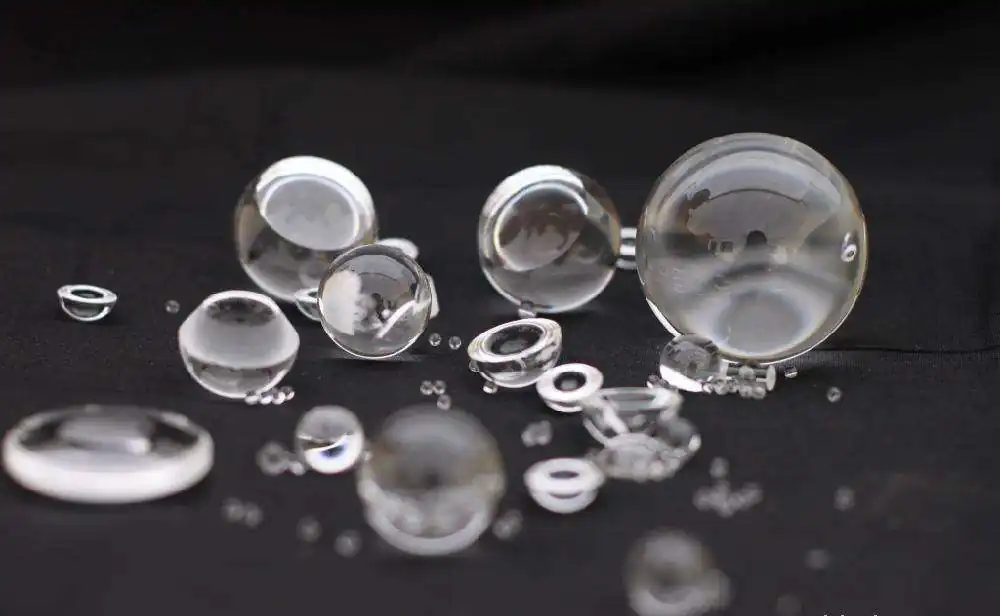Magnesium oxide plays a crucial role in polishing glass balls. Its main advantages lie in its ability to improve polishing efficiency, enhance surface quality, provide uniform polishing effects, and offer high safety and economic benefits. It has wide applications in precision machining, optical devices, decorative glass, and other fields. By optimizing the particle size, concentration, and usage method of magnesium oxide, the polishing effect can be further enhanced, making it an indispensable material in the glass ball polishing process. The following is a detailed explanation of the main roles of magnesium oxide in glass ball polishing:

1. Improving Polishing Efficiency
Magnesium oxide has good hardness and appropriate particle size, which allows it to effectively remove tiny scratches and unevenness on the surface of glass balls during the polishing process. By rationally controlling the particle size and concentration of magnesium oxide, higher polishing efficiency can be achieved. Under appropriate conditions, magnesium oxide can remove surface defects quickly while maintaining high gloss.
- Particle Size Selectivity: The particle size of magnesium oxide powder can be selected according to the polishing requirements. Coarse particles are used for preliminary polishing to remove larger imperfections and surface roughness, while fine particles are used for fine polishing to provide a smooth surface and mirror-like effect.
- Controlling Polishing Time: Matching the particle size of magnesium oxide with the polishing time can optimize the polishing speed and avoid material loss caused by over-polishing.
2. Improving Surface Quality
In glass ball polishing, surface quality is crucial, especially for applications that require high transparency, gloss, and surface flatness, such as optical glass and decorative glass. The use of magnesium oxide can effectively enhance the surface’s smoothness and brightness.
- Surface Smoothness: Magnesium oxide particles are relatively soft and can be evenly distributed during the polishing process, reducing scratches and uneven gloss caused by excessive abrasion. It can effectively remove minor surface imperfections, improving surface smoothness and uniformity.
- High Gloss: Magnesium oxide powder has good polishing performance. Through meticulous polishing, it can make the glass ball surface appear bright and mirror-like, enhancing the visual appeal of the product.
3. Uniformity and Controllability
Magnesium oxide exhibits good uniformity during the polishing process. Due to its chemical stability and gentle abrasive properties, it can maintain uniform distribution during polishing, avoiding localized over-abrasion or surface unevenness caused by uneven polishing.
- Controllable Grinding Rate: The grinding rate of magnesium oxide is controllable, making it suitable for glass balls that require fine surface treatment. By adjusting the size and concentration of magnesium oxide particles, the polishing rate and effect can be adjusted according to the needs, ensuring the accuracy of the entire polishing process.
- Reducing Thermal Damage: Magnesium oxide causes a relatively small temperature increase during the polishing process, preventing thermal damage to the glass surface due to high temperatures, especially not changing the physical properties of the glass during long-term processing.
4. Avoiding Secondary Damage to the Glass Ball Surface
Magnesium oxide is a relatively gentle polishing material, causing minimal physical damage to the surface of glass balls. It does not generate significant friction on the glass surface like some harder polishing agents (such as aluminum oxide), thus reducing the risk of scratches or indentations.
- Reducing the Generation of Micro-Cracks: Magnesium oxide has low hardness and good adaptability, which can effectively prevent the generation of micro-cracks or damage on the glass surface, ensuring the integrity of the glass ball after polishing.
- Reducing Residue of Contaminants: Magnesium oxide is not prone to react with the glass surface during polishing, so it does not produce oxides or other impurities that contaminate the surface, ensuring the cleanliness and flawlessness of the glass ball surface.
5. Improving the Safety of Operators
The safety of magnesium oxide is also an important reason for its widespread use in the polishing industry. Magnesium oxide itself is non-toxic and operator-friendly, complying with modern environmental standards.
- Non-Toxicity: As a non-toxic and environmentally friendly substance, magnesium oxide does not pose a hazard to the environment or operators compared to other chemicals in the glass ball polishing process.
- Low Irritation: Magnesium oxide has low irritation to the skin, eyes, etc. Compared to some stronger polishing agents (such as certain acidic or alkaline polishing agents), magnesium oxide is safer.
6. Cost-Effectiveness
Compared to other polishing materials, especially metal oxides (such as aluminum oxide and silicon oxide), magnesium oxide generally has a lower cost. Its low price and efficient polishing performance make it the material of choice for many small and medium-sized manufacturers.
- Economy: The production and use cost of magnesium oxide are low, and the polishing efficiency is high, so it can provide a better cost-effectiveness ratio, especially suitable for large-scale production.
